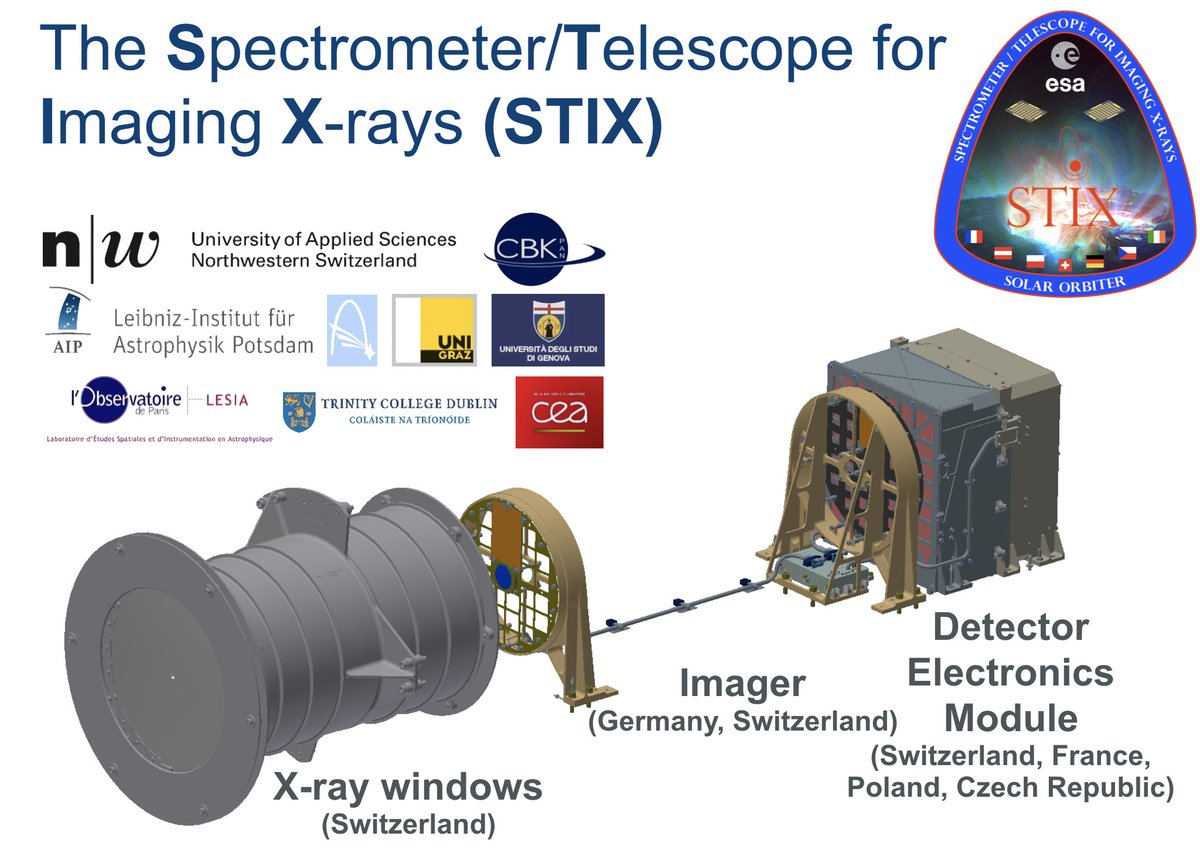STIX - The Spectrometer/Telescope for Imaging X-rays

STIX is a state of the art imaging X-ray telescope, which was built by a consortium led by the University of Applied Sciences and Arts Northwestern Switzerland (FHNW). It provides imaging spectroscopy with highest ever spatial resolution and sensitivity of solar thermal and non-thermal X-ray emission. The AIP contributed by designing and building the imager, which is a pivotal part of the instrument, and is involved in the operation of the instrument.

Flight model of STIX imager (front) and detector electronics box (rear).
Credit: AIP/H. ÖnelThe two main parts (i.e., the imager and the detector electronics box) of STIX are mounted independently on the spacecraft. The imager consists of 32 pairs of X-ray opaque tungsten grids mounted in front of 32 solid-state Cadmium Telluride pixelated X-ray detectors which are located in the detector electronics box and make up the spectrometer.
STIX covers the energy range between 4 keV and 150 keV with an energy dependent resolution of 1 keV to 15 keV. Its finest angular resolution and temporal resolution are 7 arcsec and 0.1 second, respectively.
By observing hard X-ray bremsstrahlung emissions from solar flares, STIX will provide diagnostics of the hottest flare plasma while quantifying the location, spectrum, and energy content of flare-accelerated nonthermal electrons. Thus, STIX will provide the high-energy link between remote-sensing and in-situ observations.

The STIX Aspect System (SAS)
Because only flaring regions emit hard X-rays, no other solar feature (e.g. the solar limb) can be used to accurately locate the sources of emission on the solar surface. Therefore, a dedicated optical instrument was designed, built, and integrated in the Imager by AIP to measure the pointing of the STIX imaging axis with respect to the Sun with an accuracy of better than 4 arcseconds. This is of crucial importance in order to place STIX images in the context of images acquired in other wavelengths.
STIX Operations and Data Center
The STIX Operations and Data Center is hosted by the University of Applied Sciences and Arts Northwestern Switzerland. Among others, it provides access to quick-look data (light curves), and a list of solar flares that have been detected with STIX.